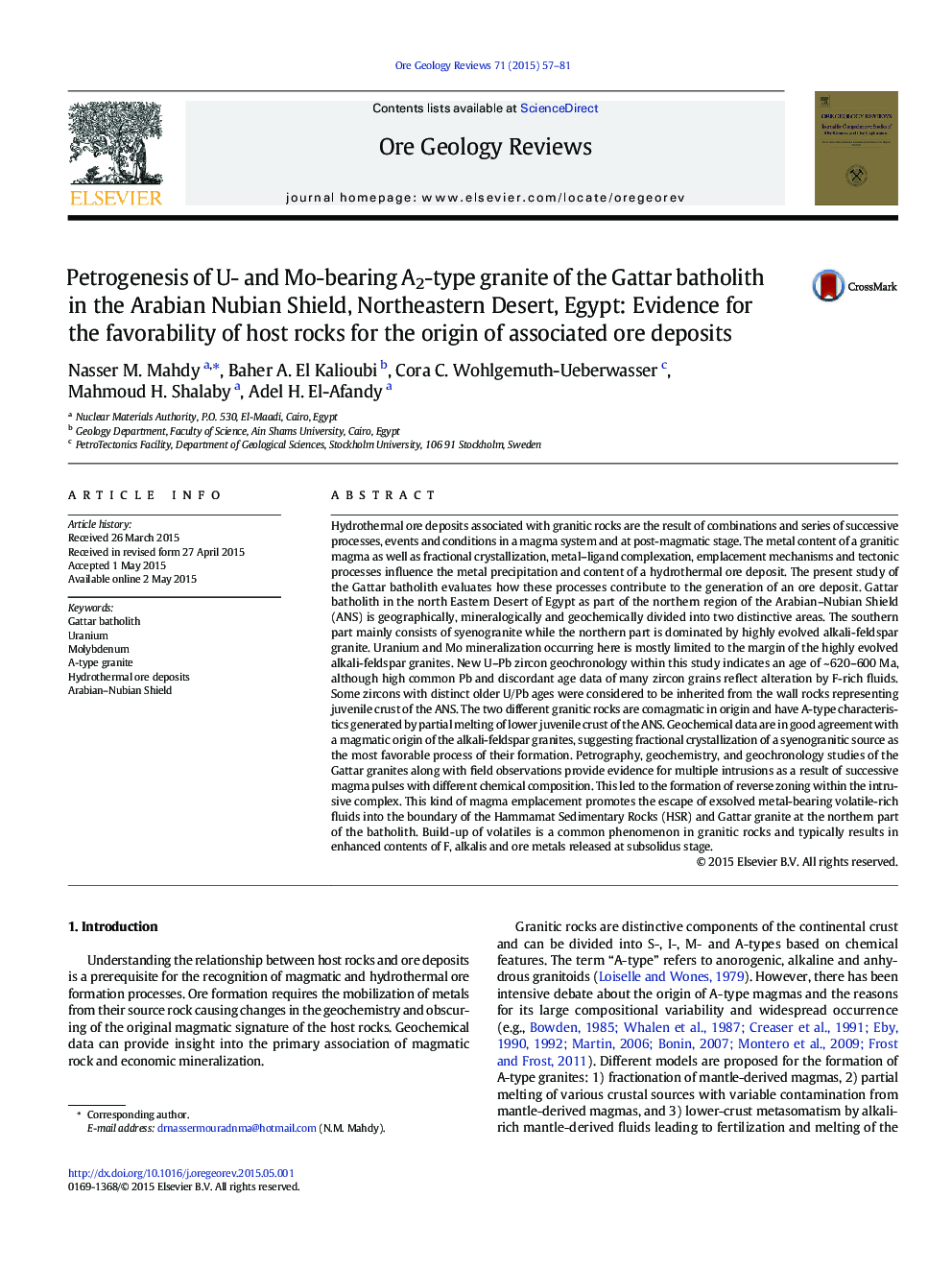| کد مقاله | کد نشریه | سال انتشار | مقاله انگلیسی | نسخه تمام متن |
|---|---|---|---|---|
| 4697010 | 1637233 | 2015 | 25 صفحه PDF | دانلود رایگان |

• The Gattar batholith is divided into two distinctive phases.
• The two granitic phases are genetically related.
• Occurring U and Mo mineralization is related to the highly evolved phase.
• The factors controlling ore accumulations are not restricted to the metal contents of granitic magma.
Hydrothermal ore deposits associated with granitic rocks are the result of combinations and series of successive processes, events and conditions in a magma system and at post-magmatic stage. The metal content of a granitic magma as well as fractional crystallization, metal–ligand complexation, emplacement mechanisms and tectonic processes influence the metal precipitation and content of a hydrothermal ore deposit. The present study of the Gattar batholith evaluates how these processes contribute to the generation of an ore deposit. Gattar batholith in the north Eastern Desert of Egypt as part of the northern region of the Arabian–Nubian Shield (ANS) is geographically, mineralogically and geochemically divided into two distinctive areas. The southern part mainly consists of syenogranite while the northern part is dominated by highly evolved alkali-feldspar granite. Uranium and Mo mineralization occurring here is mostly limited to the margin of the highly evolved alkali-feldspar granites. New U–Pb zircon geochronology within this study indicates an age of ~ 620–600 Ma, although high common Pb and discordant age data of many zircon grains reflect alteration by F-rich fluids. Some zircons with distinct older U/Pb ages were considered to be inherited from the wall rocks representing juvenile crust of the ANS. The two different granitic rocks are comagmatic in origin and have A-type characteristics generated by partial melting of lower juvenile crust of the ANS. Geochemical data are in good agreement with a magmatic origin of the alkali-feldspar granites, suggesting fractional crystallization of a syenogranitic source as the most favorable process of their formation. Petrography, geochemistry, and geochronology studies of the Gattar granites along with field observations provide evidence for multiple intrusions as a result of successive magma pulses with different chemical composition. This led to the formation of reverse zoning within the intrusive complex. This kind of magma emplacement promotes the escape of exsolved metal-bearing volatile-rich fluids into the boundary of the Hammamat Sedimentary Rocks (HSR) and Gattar granite at the northern part of the batholith. Build-up of volatiles is a common phenomenon in granitic rocks and typically results in enhanced contents of F, alkalis and ore metals released at subsolidus stage.
Journal: Ore Geology Reviews - Volume 71, December 2015, Pages 57–81